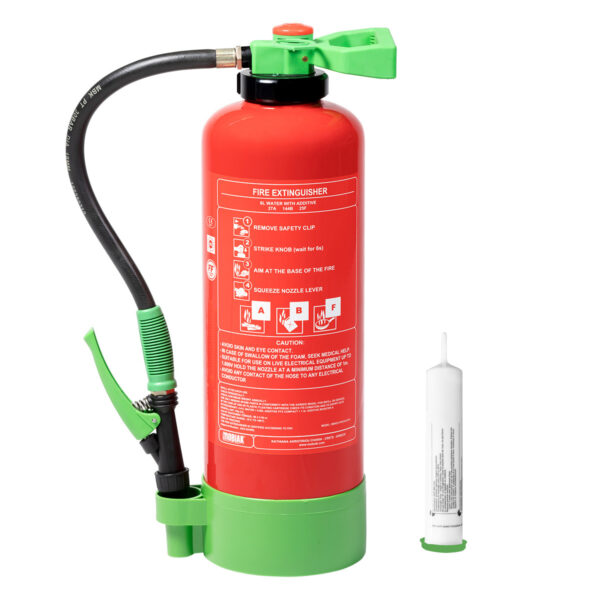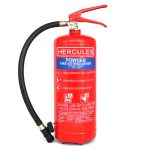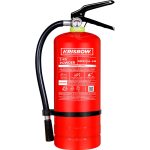When it comes to fire safety, having quick and ready access to fire extinguishers is critical. In emergencies, every second counts, and being unprepared could lead to disastrous consequences. Many people often take fire safety measures for granted until they are faced with an emergency. In 2024, understanding how to improve access to free fire extinguisher can potentially save lives and protect property. This essential guide focuses on the best practices for free fire extinguisher access, ensuring that you and those around you are prepared in case of a fire emergency. By following these guidelines, you can make significant strides toward enhancing safety and minimizing risks.
Understanding Fire Extinguishers
Types of Fire Extinguishers
To know your fire safety equipment better, it’s crucial to understand the different types of fire extinguishers and the specific classes of fires they are designed to combat. The most common types include:
- Class A Extinguishers: These extinguishers handle common combustibles like wood, cloth, and paper. They are generally water-based and work by cooling the fire.
- Class B Extinguishers: Suitable for flammable liquids, including gasoline and oils, these extinguishers are vital in garages and workshops where such materials are common.
- Class C Extinguishers: These are designed for fires involving electrical equipment, such as appliances, wiring, or circuit breakers. They help prevent electric shock while extinguishing the fire.
- Class D Extinguishers: Specific to combustible metals, such as magnesium or titanium, these are often seen in industrial settings where such materials are used.
- Class K Extinguishers: These are used for fires involving cooking oils and greases, primarily found in commercial kitchens and around grills.
Understanding these classifications will help ensure you select the correct fire extinguisher for your environment and any potential hazards. Knowing which type to use can also provide peace of mind, allowing you to act quickly without second-guessing yourself in the heat of the moment.
Importance of Accessibility
Access to fire extinguishers goes beyond simply having them available; location and visibility are paramount. Fire extinguishers should be clearly marked and easily accessible in case of an emergency. Situations can escalate quickly, and the last thing anyone wants is to spend crucial seconds searching for the right equipment. Making sure that extinguishers are conveniently located near potential fire hazards—like kitchens, mechanical rooms, or storage areas—can significantly enhance your safety.
Moreover, consider the physical state and placement of the extinguishers. They should not only be mounted at eye level but also in places that everyone can reach easily, regardless of their height or physical ability. Establishing clear protocols regarding extinguisher access points and making sure all occupants are familiar with them are critical steps in ensuring safety during an emergency.
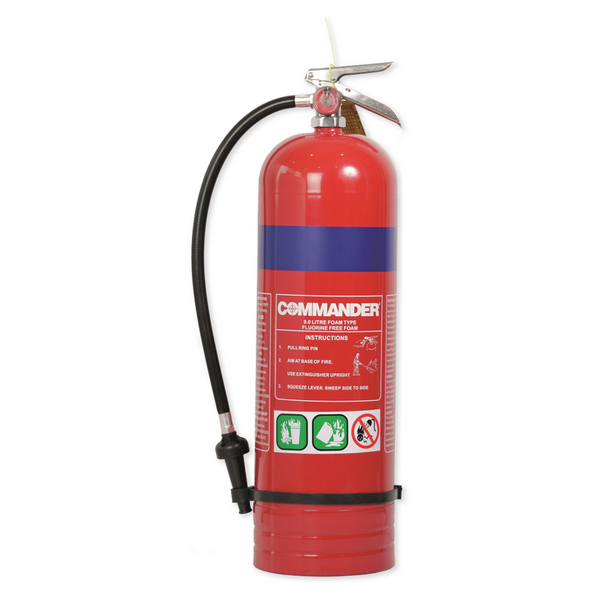
Local Regulations and Compliance
Understanding Fire Codes
Every community has local fire codes that dictate the standards for fire safety, including where and how many fire extinguishers to have. In many jurisdictions, the National Fire Protection Association (NFPA) sets guidelines that require extinguishers to be mounted at specific heights, typically between 3.5 to 5 feet above the ground. Knowing these regulations helps ensure that your fire extinguishers comply, thereby keeping you safe and potentially avoiding penalties for non-compliance. Local codes may also specify the minimum number of extinguishers required based on the size and layout of the building.
In addition to knowing height requirements, consider whether there are additional stipulations about the type or class of extinguishers necessary for specific environments. For example, commercial kitchens may require Class K extinguishers, while industrial settings may need Class D extinguishers due to the materials present. Ignorance of these codes can lead to serious repercussions, including increased liabilities in case of incidents.
Regular Inspections
According to regulations, fire extinguishers require regular inspections to ensure they function properly when needed. This routine involves checking that extinguishers are fully charged, accessible, and in good working condition. Scheduling annual professional inspections along with monthly visual checks by designated staff can help maintain compliance and readiness. Non-compliance or malfunctioning equipment could lead to severe consequences during an emergency.
During these inspections, look for specific indicators like pressure gauge readings, physical damages such as dents or corroded surfaces, and the expiration dates of extinguishers. Establishing a trackable record of inspections will not only help maintain compliance but also instill a culture of safety awareness among all occupants of a building.
Placement Strategies
Choosing the Right Locations
Placement plays a crucial role in maximizing the utility of fire extinguishers. They should be located within 75 feet of any potential fire hazard, such as storerooms, workshops, or kitchens. This placement minimizes the time it takes for individuals to access the extinguisher when a fire strikes. Additionally, it’s advisable to have extinguishers on every level of a multi-story building. Doing so ensures that occupants can reach them quickly, regardless of where they are in the building at any given moment.
Consider creating a map that indicates where extinguishers are located throughout the premises. Having designated locations for each extinguisher, which are easily recognizable helps prevent confusion during emergencies. Equally important is ensuring that these locations remain free of obstructions, allowing swift access.
Visibility and Signage
Visual cues are essential for ensuring that fire extinguishers are easily spotted during an emergency. Mark the locations with bright, clear signage that follows universal symbols for fire safety equipment. Use reflective or luminous materials so that extinguishers remain visible even in low-light or smoky conditions. Clearly marking entrances with both signage and extinguishers will guide individuals quickly to safety routes.
Additionally, conduct regular checks to verify that signage remains intact and easily readable. If signage becomes damaged, faded, or obscured, replace it immediately to ensure that everyone can find extinguishers in times of need. Training everyone in your organization or community about these locations will further enhance overall safety.

Education and Training
Importance of Educational Programs
An essential aspect of free fire extinguisher access is educating occupants on how to use them properly. Hosting training programs on fire safety can significantly increase awareness and preparedness among staff members or residents. These programs should not only cover how to use extinguishers but also include information about fire prevention techniques, common fire hazards, and emergency evacuation routes.
Moreover, consider using real-life scenarios to make the training relatable. Engaging training sessions that simulate various fire situations can instill confidence in individuals, enabling them to react effectively in an actual emergency. Customizing training to fit specific environments—like kitchens or manufacturing areas—can maximize its relevance and impact.
Hands-On Training
Practical drills allow individuals to practice using extinguishers in a controlled environment. This hands-on experience builds confidence and readiness, making it easier to act during real emergencies. Training should cover the “PASS” method—Pull, Aim, Squeeze, and Sweep—ensuring everyone knows how to operate extinguishers effectively. Engaging them in safe training exercises, such as using water-filled extinguishers, helps familiarize individuals with the equipment without the anxiety of a real emergency.
Additionally, schedule regular refresher courses to ensure continued awareness and skill retention. People may forget usage protocols over time, so consistent training reinforces the knowledge and helps maintain a fire-safe environment.
Fire Extinguisher Maintenance
Regular Checks
A maintenance program is key to ensuring that fire extinguishers work when needed. Regularly check for pressure gauge readings, overall structural integrity, and physical condition. Look for signs of corrosion, leaks, or any physical damage. Extinguishers should be inspected monthly, with a more comprehensive examination performed yearly by certified professionals. Establishing a standardized checklist can simplify these inspections and make it easier for staff to remember key points of focus.
For high-risk environments, consider increasing the frequency of checks to keep pace with equipment wear and tear. Keeping a maintenance log showing the results of these checks can provide valuable data and ensure accountability. This log should also document any actions taken during inspections, such as recharging or repairs.
Recharging and Replacing
If an extinguisher has been used or shows signs of damage, it will likely need to be recharged or replaced. Rechargeable extinguishers must be serviced immediately after use, and any that have failed an inspection need prompt attention. Additionally, extinguishers have a life expectancy—typically around 5 to 15 years—depending on the materials used. Be proactive about replacing extinguishers nearing the end of their lifespan to ensure ongoing safety.
Setting reminders or notifications about the expiration dates of each extinguisher can help streamline the replacement process, avoiding delays in critical situations. Fire safety is not just about compliance; it’s about effectively maintaining readiness for when real emergencies occur.
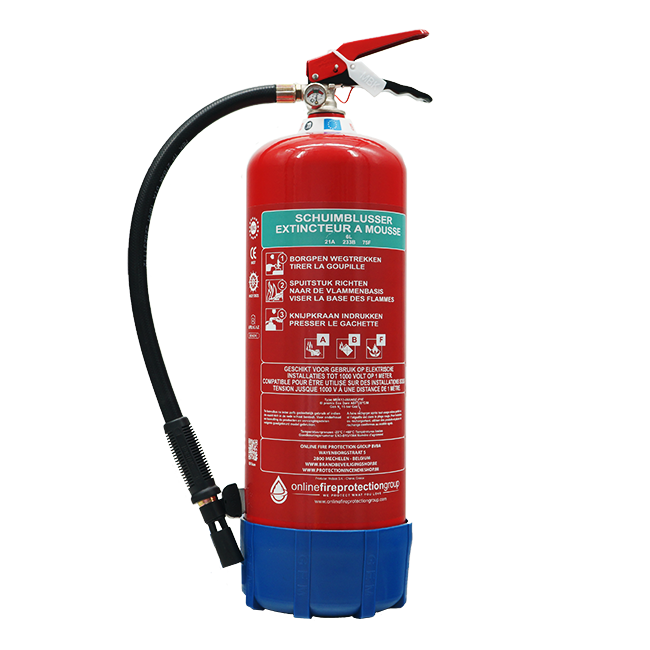
Creating an Evacuation Plan
Strategizing an Effective Plan
An evacuation plan is integral to fire safety preparedness. Map out all potential escape routes and clearly indicate where fire extinguishers are located in relation to those exits. In multi-story buildings, identify safe stairwells, and establish assembly points outside the structure for accountability. Ensure routes are kept clear and easily accessible to enhance safe evacuation.
Involving multiple disciplines in developing the plan, such as emergency services, safety officers, and even employees, can provide diverse perspectives that enhance the final strategy. Furthermore, periodically reviewing and updating the plan in light of organizational changes ensures that everyone stays informed and prepared.
Communicating the Plan
Once you’ve created an evacuation plan, it’s vital to share it. Conduct regular fire drills to rehearse the plan, ensuring everyone knows their roles and responsibilities. Communication extends to signage; ensure that exit routes and fire extinguisher locations are visibly marked throughout the building. Familiarity breeds confidence and preparedness; the more often individuals practice the plan, the more instinctual their responses will become in real situations.
Make it a habit to review the evacuation plan with all new employees or residents, and consider posting copies of the plan in common areas to enhance awareness. The goal is to ensure that during an emergency, everyone can act swiftly and confidently.
Community Resources and Support
Local Fire Departments
Don’t hesitate to reach out to your local fire department for guidance on fire safety initiatives. Many departments offer free consultations and may provide training sessions or educational materials for workplace settings. Building relationships with fire safety professionals can enhance your understanding of local regulations and best practices. Creating partnerships can offer invaluable resources, such as workshops or training drills and may even provide assistance in assessing your facilities for vulnerabilities.
Funding and Grants for Equipment
In 2024, several programs may offer funding or grants specifically aimed at improving fire safety. Look for local or national initiatives that focus on assisting businesses and communities in obtaining fire safety equipment, including extinguishers. These resources help ensure that everyone has access to the tools they need to support fire safety. Engaging with nonprofit organizations focused on community safety can also open doors to further resources.
Community-driven initiatives can strengthen overall fire safety while also fostering relationships among local residents and businesses. Furthermore, by pooling resources, you can share knowledge and strategies that enhance safety practices across the board.
Conclusion
Understanding free fire extinguisher access is crucial for maintaining safety in any setting. By familiarizing yourself with the types of fire extinguishers, local regulations, proper placement strategies, maintenance requirements, and the importance of training, you can significantly increase your preparedness for fire emergencies. It’s not just about having extinguishers available; it’s about ensuring they are accessible, functional, and effective when needed.
Empowering your community with knowledge and resources helps create a safer environment for everyone. By prioritizing fire safety, educating those around you, and engaging with local resources, you can help ensure that fire extinguishers are more than just safety equipment; they are essential tools ready to fight fire emergencies effectively. As we move forward into 2024, let’s remain proactive, committing ourselves to safety and preparedness in every setting. Taking these tangible steps will bring peace of mind as we work together to protect ourselves and our surroundings from potential fire hazards.
